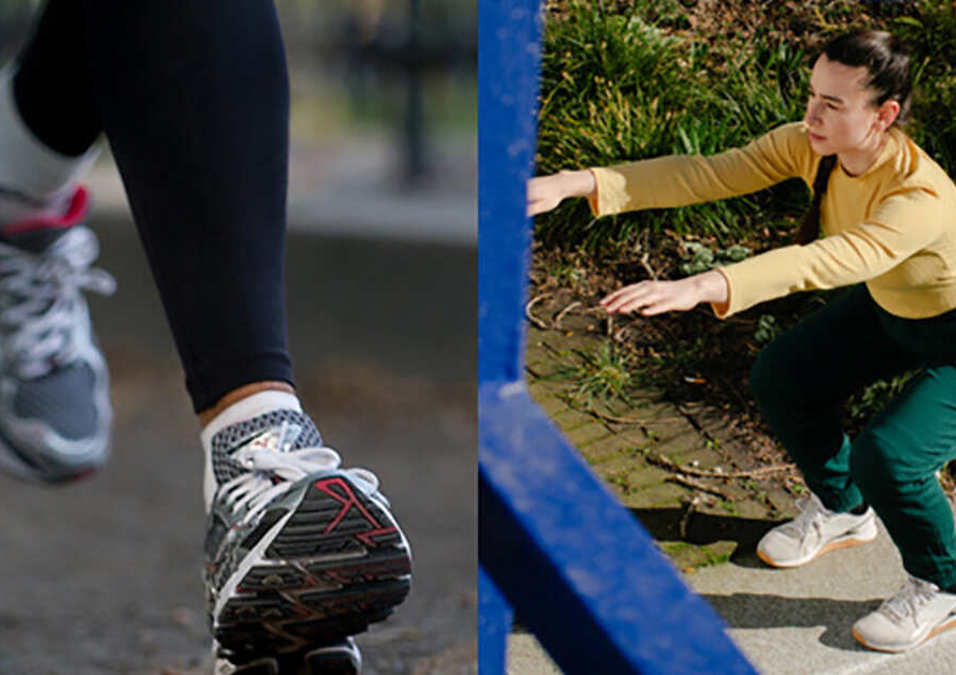Make Exercise Essential in 2025

SIGN UP FOR YOUR FREE DAY PASS TODAY!
Eight years ago, I made a resolution to get fit and strong—something many Americans aim to do at the start of a new year.
According to Gallup, about 70% of U.S. adults set goals at the beginning of the year, with health and fitness being the most popular ones.
Yet, by mid-February, 80% of those resolutions are abandoned. I had experienced this pattern myself, with my promises to stay active often fading after a few months of old habits creeping back.
But that year was different. I had a clear goal—to participate in an obstacle course race. Linking my resolution to a tangible objective turned out to be the key to making exercise almost nonnegotiable in my daily routine. Last year, I completed my 56th race.
Once you set a resolution, implementing specific strategies increases the likelihood that you'll stick with it. Here's what fitness and habit experts, along with my personal experience,
suggest for success:
Set an Attainable Long-term Goal
Going too hard too soon is a common mistake, says Peter Duggan, a strength, conditioning, and rehabilitation specialist at Fuel Sport & Spine.
Many people throw themselves into working out with intensity, only to end up injured by late January. Instead, Duggan advises focusing on a longer-term goal and plan.
This could be completing a 5K race in a few months or tracking progress over a 90-day challenge. Breaking it down helps maintain momentum.
For example, if January doesn’t go as planned due to illness or other obstacles, you still have February and March to build on small achievements.
For beginners, a gentle start is key—begin with walking or jogging a couple of times a week, progress to running regularly in February, and increase distance or intensity by March. Afterward, set a new goal for the next quarter.
Schedule Your Workout Time in Advance
Vague plans like “I’ll exercise at some point today” often lead to failure. Without a clear schedule, you’re more likely to default to habits like lounging on the couch or scrolling through your phone.
Instead, pre-plan your exercise sessions for the week and block out time on your calendar. Treat it like an important meeting you wouldn’t skip.
Chad Stecher, a behavioral health economist, emphasizes the importance of managing your time and habits around fitness. To make it work, determine how exercise fits into your existing routine.
I rely on my digital calendar for work, so I schedule my workouts as colored time blocks alongside my meetings. These blocks act as a reminder that my workout time is nonnegotiable.
Use Visual Cues to Stay Motivated
Visual prompts are powerful tools for building habits, Stecher explains. For instance, placing your running shoes or workout clothes somewhere highly visible increases the likelihood that you won’t forget to exercise. It’s also a tangible reminder of the commitment you’ve made to yourself.
I keep a neatly organized box in my living room filled with a yoga mat, balance board, and foam roller. Seeing it every time I walk by the kitchen encourages me to use the equipment during spare moments.
Convenience is crucial, Duggan adds. If heading to the gym feels like a hassle, try working out at home with minimal equipment, like dumbbells or a fitness app offering short, high-intensity interval training (HIIT) sessions.
Build Accountability Gradually
According to recent research, the amount of daily movement we get, as tracked by devices like wrist monitors, is a stronger indicator of longevity than factors like age or smoking.
While apps, fitness trackers, and health gadgets can offer valuable data, it’s important not to overwhelm yourself with tools when you’re just starting out.
“You don’t need fancy gear initially,” advises Duggan. Start small and listen to your body as you exercise. Once you’ve built the habit and are eager for more insights, you can invest in devices like heart rate monitors or wearable trackers.
A less complicated approach to tracking progress is what I call “completion signaling.” For example, at home, I move small objects like rocks or screws from one mug to another for every set of my workout I complete. Additionally, I mark my workouts as “Done” in my digital calendar.
These simple acts serve as visual affirmations of forward progress, making the experience more rewarding.
Cultivate Exercise as Part of Your Identity
Making fitness a core part of your identity helps to solidify new habits, says Stecher, pointing to research that links identity with sustaining behavior changes.
If being active becomes part of who you are, you’ll stick with it even when your routine is disrupted.
This resonates with me. Eight years ago, no one—including myself—would have described me as a “fit person” or an “athlete.”
Today, those words are as natural to my sense of self as “writer,” “spouse,” or “daughter.” The strategies outlined above helped me build this identity.
Wrap-up
Transforming fitness from a fleeting resolution to a permanent lifestyle doesn’t happen overnight. It requires realistic goals, careful planning, consistent reminders, and gradual progress.
Whether it’s blocking time on your calendar or setting up visual cues, these small changes can lead to significant long-term results.
With determination and a few simple tactics, you can turn exercise into an essential part of who you are.
Source: washingtonpost
The opinions shared in the GymNation blog articles are solely those of the respective authors and may not represent the perspectives of GymNation or any member of the GymNation team.
GET YOUR FREE TRIAL TODAY

















































































